When you think of those big, beautiful draft horses, two breed names that often come to mind are the Clydesdale and the Percheron. They certainly share a lot of physical traits stemming from their size alone, but they also differ in distinct ways. Despite these being two totally separate breeds, they are often mixed up and mistaken for one another.
Learn to tell these towering equines apart as we compare and contrast Percherons and Clydesdales.
| Percheron | Clydesdale | |
| Height | 16-17 Hands | 17-18 Hands |
| Weight | Up to 2,600 lbs | 1,800 – 2,000 lbs |
| Origin | France | Britain / Scotland |
| Bloodlines | Some Outcrossing | Mostly Pure |
| Leg Feathers | Moderate | Heavy |
| Common Colors | Gray, Black | Bay |
| High White Leg Markings | Rare | Common |
| Best Suited For | Riding | Driving |
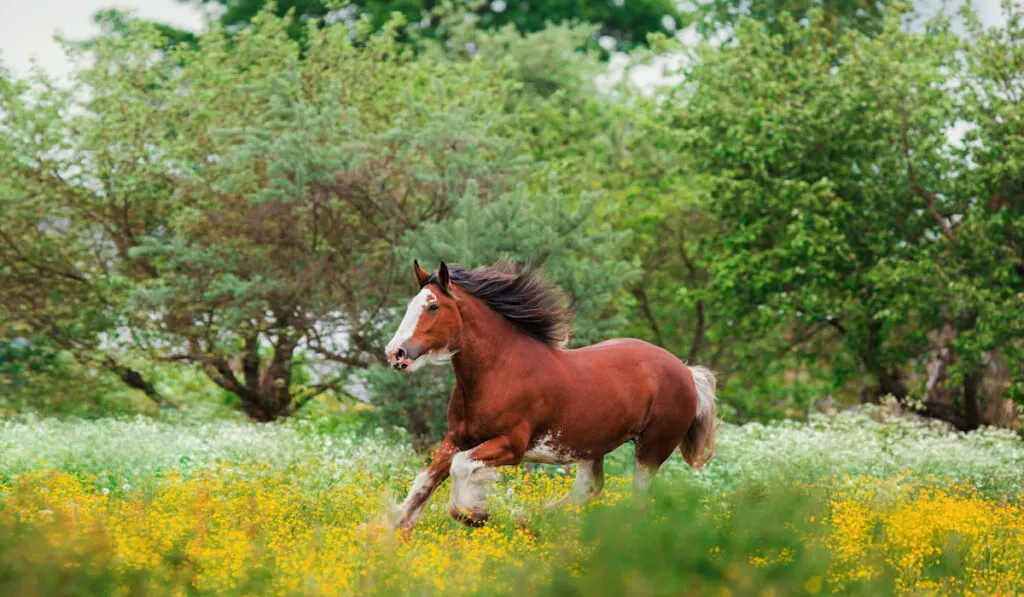
Table of Contents
Similarities
Let’s start with the undeniable: both Clydesdales and Percherons are big ol’ draft horses with a long history as European exports. They both share a calm, intelligent and level-headed demeanor and were working horses, helping lay the foundations of farms and cities at the turn of the Industrial Revolution.
Their enormous size and indisputable muscularity made them ideal candidates for heavy farm work and, especially, for pulling cargo. In fact, they both were crucial for agriculture, industry, and war.
Differences
Though both Clydesdales and Percherons have similar characteristics, their differences can be traced back to their origins.
Percherons hail from the western regions of France, having been bred in the 1800s in pursuit of the ultimate “Great Horse” for wartime victories. Over time, Percherons evolved into farming horses, logging haulers, and the preferred puller of carts, floats, and cargo.
Clydesdales, on the other hand, are of British stock, named for their homeland in southwest Scotland. They were bred as hefty workhorses, focusing on strength and personality (sturdy enough to pull a plow but also calm and trainable), which also made them excellent candidates for cavalry horses. Outside of wartime, they too found another career in pulling heavy wagons and delivery carts.
As the breeds progressed, the Clydesdale bloodline stayed more close to its origins and pure, while the Percherons incorporated some cross breeding, especially with Andalusians and Thoroughbreds, evolving the horse over time into the smaller, athletic Percheron we see today.
Physically, they differ most notably around their legs. Clydesdales are famous for their thick, feathered hair around the lower half of their legs. While Percherons have a silky coat, and can have hair that is a bit thicker on their lower legs, they do not share the same cascade of ‘feathers’ around their feet.
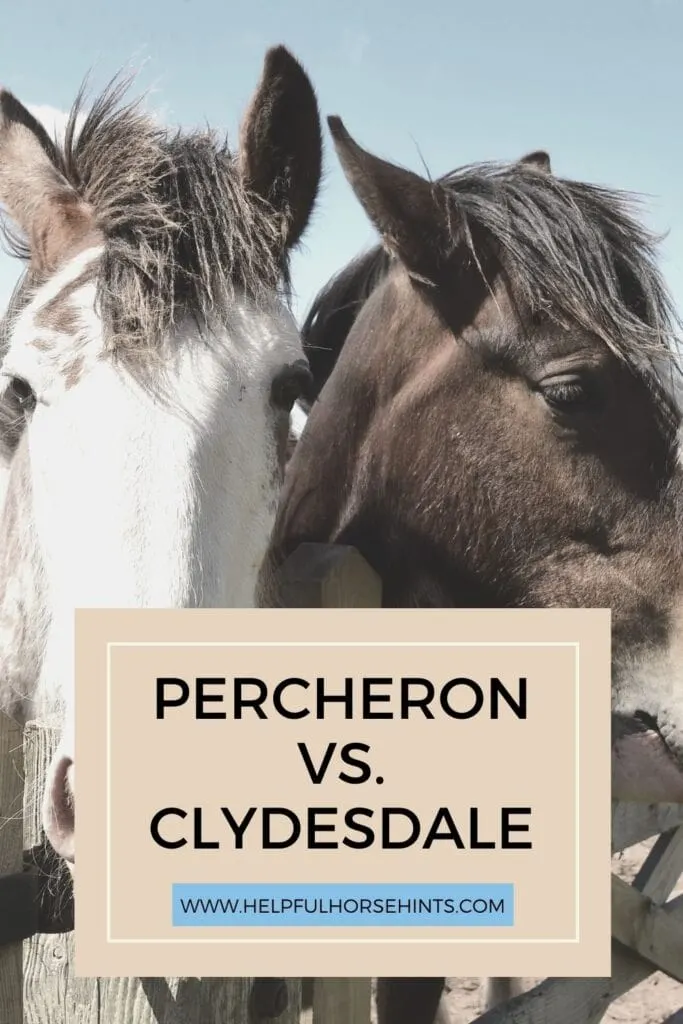
Interestingly, while the thick, white fur at the feet makes the Clydesdale a favorite for shows and exhibitions, it also has a practical purpose. Those feathers may take require a lot of grooming and maintenance, but they also protect the lower legs from mud and water – both of which are prevalent on Scottish farms!.
Clydesdales are probably the flashiest of the draft horses, being known for their stylish movement and long stride. (source) When it comes to the elegance of movement, a Clydesdale will steal the show.
Physically, though, the Percheron is noted for showing its Arabian blood in the form of arched, attractive necks, elegant faces with strong jaws, and refined, prominent eyes.
Because of that original crossbreeding, the Percheron is more suited than a Clydesdale to further crossbreeding today. While you will typically only find Clydesdales bred to other Clydesdales, Percherons can be crossed with Thoroughbreds or other warm-blooded horses so as to be further refined for showing and riding.
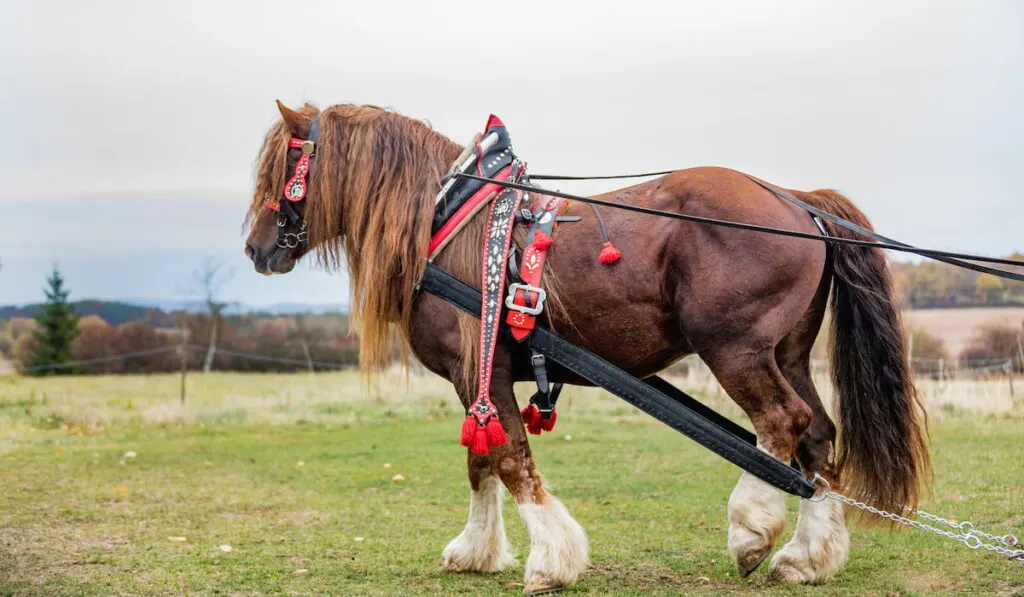
Coat Colors
When it comes to Percherons, their coats can be a metaphorical rainbow of solid colors: black, gray, chestnut, bay, and sorrel. For them, the most common coat colors are gray or black.
There are some interesting distinctions in Percheron registries concerning coat colors, though; American ones accept all colors while French and British ones will register only coats of black, gray, or Percherons born with black fur that fades to gray over the years. While a purely solid-colored coat is preferable, some white markings will be accepted.
Clydesdales are mainly going to sport a bay coat. However, they occasionally have chestnut, black or even gray coats and can even exhibit some roaning. Though they usually one solid color, the majority of them will have white markings on the face and lower legs, and even spots on their bellies – the exact opposite of the Percheron, where solid coats are the norm and white markings rarer.
Size Showdown
Though both are impressively large horses, Percherons tend to edge out Clydesdale for muscle – but not height. In terms of height, Percherons are generally between 16 and 17 hands tall, while Clydesdales can stand up to 18 hands high. Overall, the Clydesdale is less wide than the Percheron and also less compact in terms of muscular build. (source)
Looking at size in terms of weight and sturdiness, though, the Clydesdale is the lighter built breed. They generally weigh somewhere in the arena of 1,800 to 2,000 pounds, while Percherons can weigh a whopping 2,600 pounds!
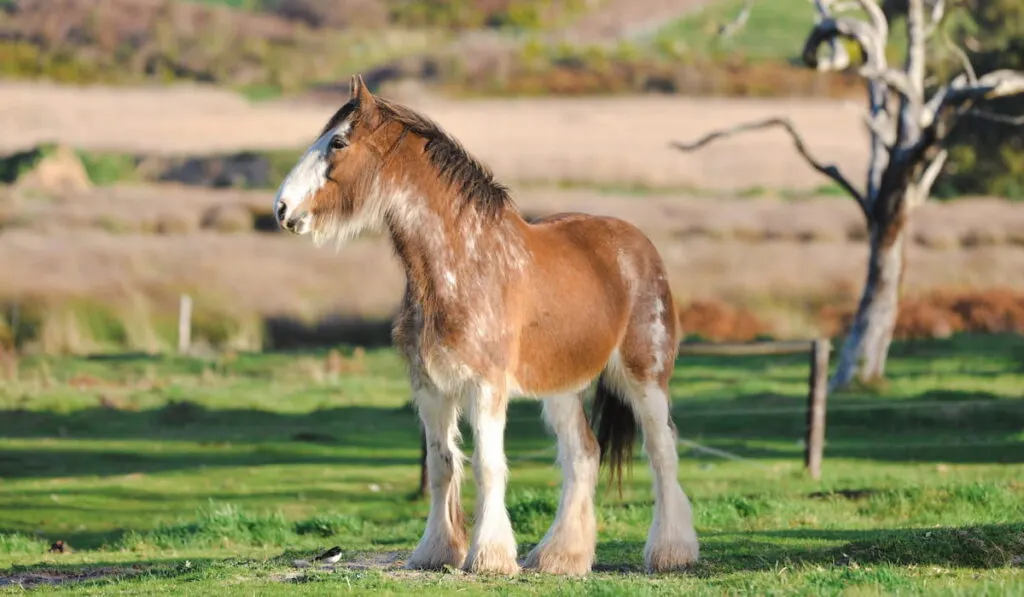
Which is Easier to Ride?
Despite their intimidating size, both horses are ideally suited for riding, thanks to their gentle nature, trainability, and calm temperaments. Though it may sound counter-intuitive to place a green rider so high up off the ground, they actually could not ask for a better mount for beginners.
Both Percherons and Clydesdales are renowned for keeping a level head and having a ton of patience.
When it comes down to it, though, many draft horse riders express a particular affinity for the Percheron. They have a reputation for being a “people horse”, and they are well known for wanting to please their owners, exhibiting patience and always trying their best.
Percherons also have warmblood and thoroughbred genes introduced in their lineage in an effort to conceive an ideal riding horse with the best qualities across the spectrum.
Percherons are almost unmatched in their ability to reach top speeds without sacrificing on power, making them an athletic and versatile horse with under saddle.
When it comes to riding a Percheron or a Clydesdale, the challenges will not be in the ride itself, but rather the geometry. Sitting astride a draft horse can feel rather like straddling a very large barrel, making balance and posture a bit different. You will also need custom tack made especially for draft horses, as regular horse-sized equipment will be too small.
Which is Better Suited for Driving?
With their sizes, strength and stamina, it is no surprise that both the Clydesdale and the Percheron are uniquely well suited to driving.
Clydesdales have a lot of fans as driving horses, and are often the first horses associated with harness pulling, thanks largely to the famous team of Budweiser Clydesdales.
But Percherons are excellent driving horses, too! Percherons are often the first choice for parades and carriages. Take, for example, Disneyland Paris, where Percherons account for 30% of the horses used in the park. (source)
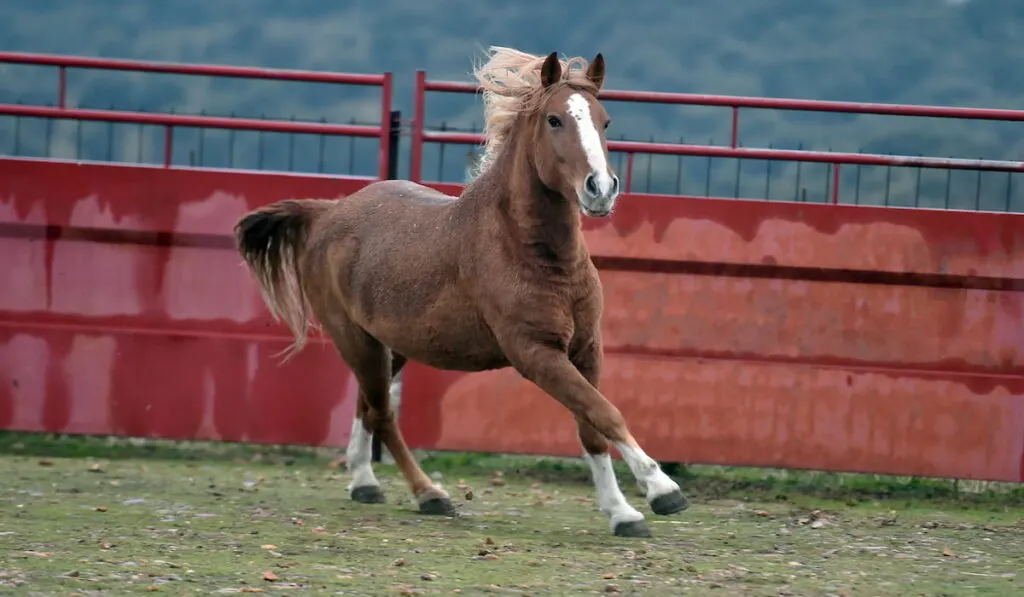
Because both horse breeds have a history of pulling much larger wagons, they are a natural fit for pulling even smaller carts in the sport of driving.
Draft horses are always easy to pick out in a herd. Though their size and stature may be similar among the draft breeds, it is the differences that hold key details to each breed’s strengths.
While a Clydesdale is a bit smaller in terms of weight than a Percheron, they are generally taller. Percherons tend to have pure solid coats, whereas Clydesdale breeders like white markings. In the show ring, expect the classiest movements to come from a Clydesdale, while judges may often prefer the refined physical aesthetics of a Percheron.
Both gentle giants, though, are even-tempered and make for excellent friends, companion horses, and riding horses for riders of all ages and all skills.
Resources
- https://www.heavyhorses.org.uk/breeds/
- https://cowgirltrails.com/best-breed-of-draft-horse-to-ride/

